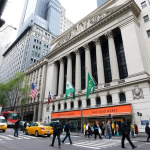Forex trading is often presented as a high-risk, high-reward endeavor, and most educational content focuses on aggressive strategies or technical indicators. However, there are safer, lesser-known methods that can help traders minimize risk while achieving consistent gains. This article uncovers these underappreciated techniques that prioritize capital preservation, psychological stability, and strategic execution.
1. The Market-Making Approach
Most retail traders act as price takers, but understanding how market makers operate can give you an edge. Market makers profit from the spread and minimize risk by hedging positions effectively. While individual traders can’t become full-fledged market makers, they can adopt similar principles:
- Trade with the spread: Instead of chasing momentum, enter trades when spreads are widest, often at session openings.
- Liquidity hunting: Identify areas where stop-loss clusters exist and trade contrarian moves based on liquidity sweeps.
- Layered entries and exits: Instead of a single entry, use staggered orders to simulate a market maker’s approach.
2. Statistical Arbitrage on Minor Currency Pairs
Statistical arbitrage (StatArb) involves trading mispriced assets based on probability models. While hedge funds use this for algorithmic trading, retail traders can apply a simpler version:
- Look for currency pairs with historically low correlations that suddenly converge or diverge abnormally.
- Use a basket trading approach to hedge exposure, minimizing directional risk.
- Analyze macroeconomic events to determine whether deviations are temporary or part of a larger trend.
3. Forward Contract Simulations for Swing Traders
Forward contracts are commonly used in institutional trading but are rarely discussed in retail trading. You can simulate a similar effect without direct access to forwards by:
- Trading correlated currency pairs to balance exposure across similar economies.
- Using multi-timeframe analysis to align trade decisions with long-term macro trends.
- Applying carry trade principles by prioritizing pairs with favorable interest rate differentials.
4. Trading the “Imbalance Window”
Few traders consider the order flow imbalance that occurs during transition periods in trading sessions. The key safe trading opportunity lies in:
- Observing liquidity shifts during session overlaps, such as London-New York.
- Entering during exhaustion points when price wicks suggest liquidity is being absorbed by institutional players.
- Using time-based exits rather than price-based ones to reduce market noise interference.
5. The Passive Hedging Method
Rather than using traditional stop-losses, advanced traders employ passive hedging techniques to minimize downside risk:
- Dual-pair hedging: If you are long on EUR/USD, hedge with a short position in a correlated pair like GBP/USD.
- Options-based protection: While forex options aren’t available to all retail traders, CFDs and futures can be used to hedge directional trades.
- Scaling into hedged positions: Adjust hedge ratios as the trade progresses rather than applying a rigid stop-loss.
6. Trade Delayed Confirmation Zones
Instead of rushing into trades based on breakouts or immediate signals, waiting for “delayed confirmation zones” can significantly reduce false signals:
- Identify reaction zones where price historically struggles to break through.
- Use time-based confirmation, such as waiting for a 4-hour candle close instead of reacting to intraday noise.
- Trade second retests instead of initial breakouts, as these are often stronger confirmation signals.
7. Institutional Order Flow Tracking
Rather than using conventional retail indicators, tracking institutional footprints can offer a safer way to trade:
- Follow Commitment of Traders (COT) reports to understand how large players are positioning themselves.
- Use volume profiles to identify areas where smart money is accumulating or distributing positions.
- Observe central bank actions closely, as they influence institutional positioning.
Conclusion
Most retail traders are taught conventional methods that expose them to high risk, but the safest trading techniques involve strategic hedging, market-making principles, statistical analysis, and institutional tracking. By incorporating these lesser-known strategies, traders can build a sustainable approach that prioritizes risk management while maximizing potential returns.








